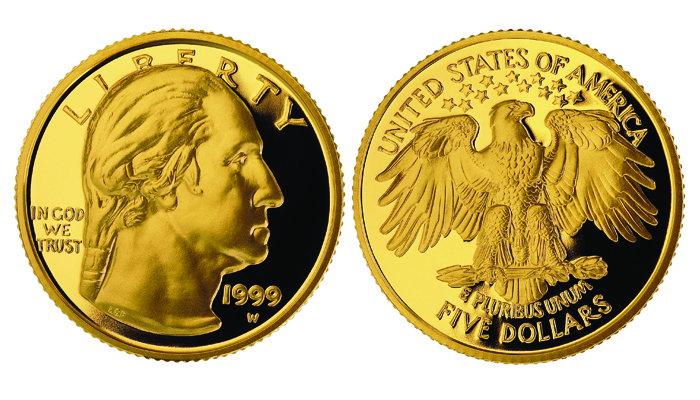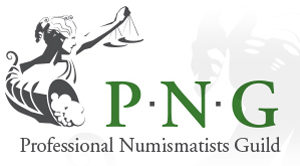It might well be suggested that the 1999 $5 gold coin marking the 200th anniversary of the death of George Washington has basically slipped under the radar, receiving very little attention.
Of course, when you consider George Washington and his initial objections to the potential of him appearing on coins as the first president, it is perhaps appropriate that the 1999 $5 caused very little stir.
 The 1999 list of commemoratives was a somewhat unusual group. It started with a silver dollar of Dolley Madison which, like the Washington commemorative, marked the 150th anniversary of her death as opposed to the normal commemoratives that mark the anniversary of someone’s birth.
The 1999 list of commemoratives was a somewhat unusual group. It started with a silver dollar of Dolley Madison which, like the Washington commemorative, marked the 150th anniversary of her death as opposed to the normal commemoratives that mark the anniversary of someone’s birth.
Certainly, when George Washington is suggested as a topic for a commemorative, you are not going to get much of a fight from anyone. Moreover, with the other two programs in 1999 being Dolley Madison and Yellowstone Park dollars, the idea of a program with just a $5 would have seemed harmless enough. Besides, a portion of the proceeds of the 1999 Washington $5 were earmarked for the Mount Vernon Ladies’ Association for the preservation of Mount Vernon, so the timing and cause were both right.
The timing was right at least in terms of getting a George Washington $5 gold coin approved, although it can certainly be debated as to whether it was a good time when it came to seeing large numbers to sell.
Although 1999 was well removed from the commemorative meltdown brought about by too many programs that were too large during the mid-1990s, the fact is that the commemorative market was still weak at best. The Atlanta program had simply flooded the market and discouraged many collectors. People had simply reached a breaking point in terms of how much they were willing to spend on commemoratives each year. In fact, the breaking point had been positively passed as people simply were not buying.
Officials had sensed the problem and commemorative offerings had been reduced, especially in the case of $5 gold coins. After 1996, there was a single $5 for Franklin D. Roosevelt and no other $5 gold commemoratives after 1996; the Roosevelt $5 had posted sales of barely 40,000, so it was hardly a smashing success.
There was certainly nothing wrong with the running of the Washington program. It was decided to use an adaptation of the Laura Gardin Fraser design that had been judged by the Commission of Fine Arts to be the winner in the competition to design what became the Washington quarter. The problem was that the Commission of Fine Arts did not have the final say in the matter, and instead the familiar John Flanagan design was selected by the Secretary of the Treasury.
The prices of $225 for a proof and $205 for a BU in the regular ordering period with the proof being $194 and a BU $180 in the pre-issue discount period were fine. In fact, they were the same as the Roosevelt $5 and lower than the Atlanta coins.
What was not so good were the orders that totaled 64,213. Today in MS-65, the 1999 is $450 as compared to its proof price, which is only $100 more at $550. Over time, if the commemorative market continues to grow as it has been doing lately, it seems that both the proof and BU will do well since the mintage is not large enough to support a larger market and that seems to be on the horizon.


